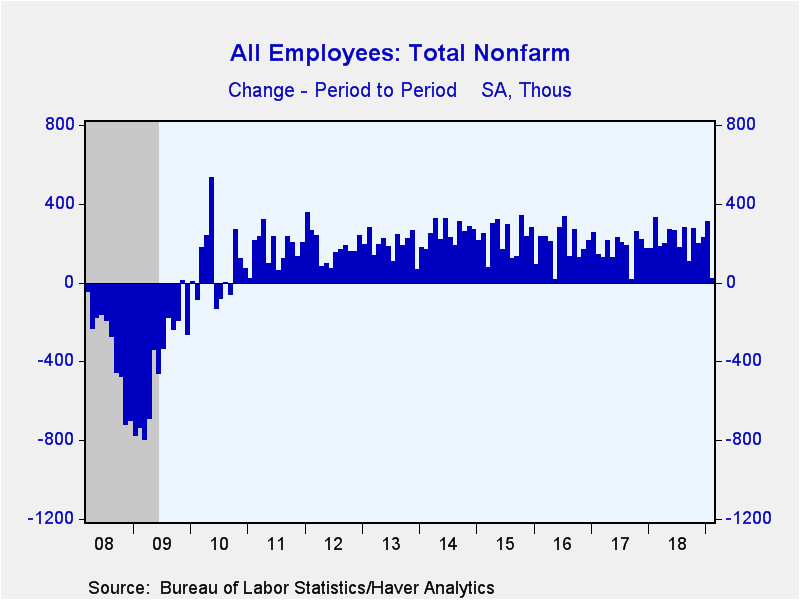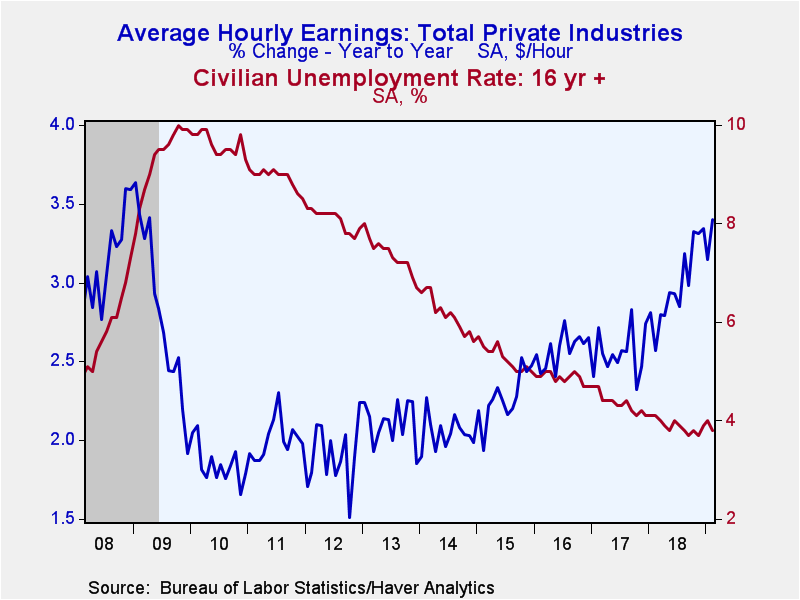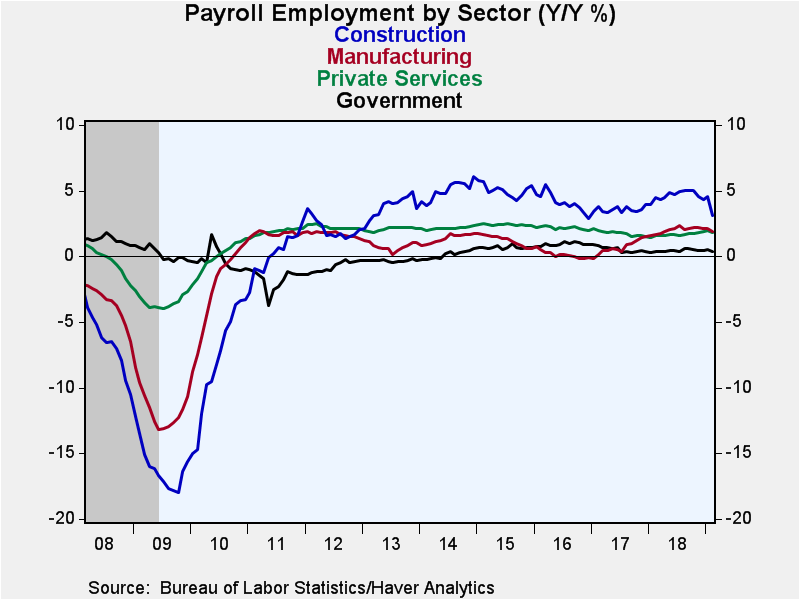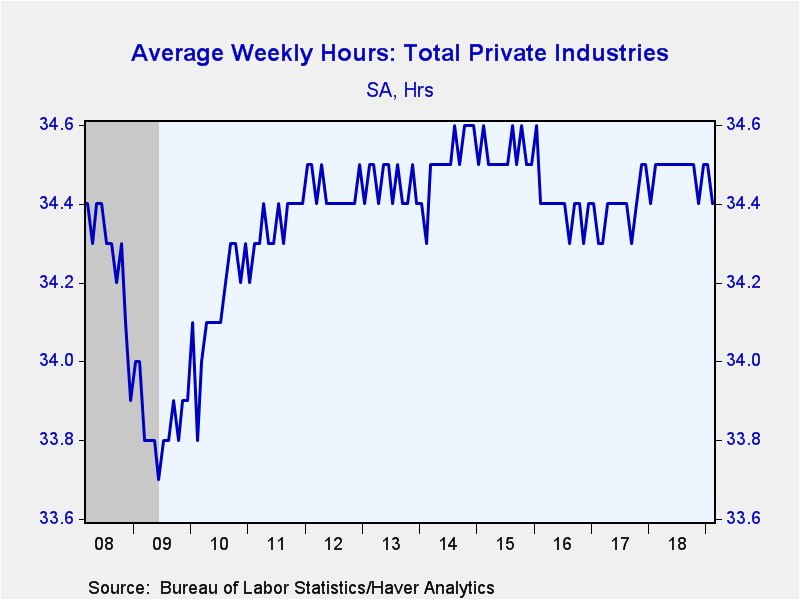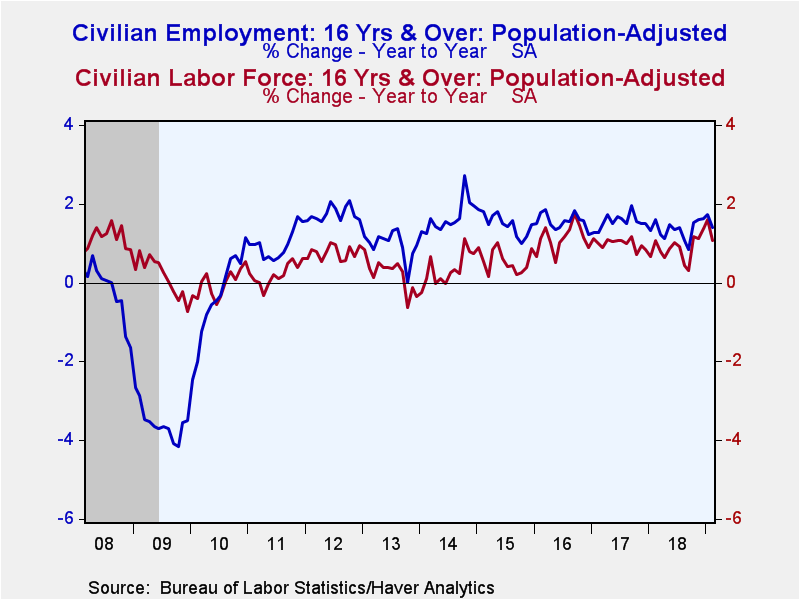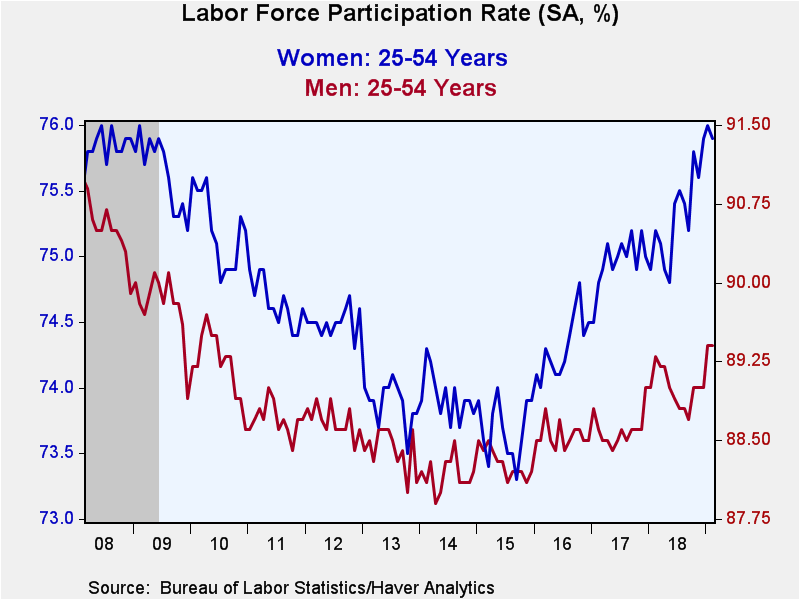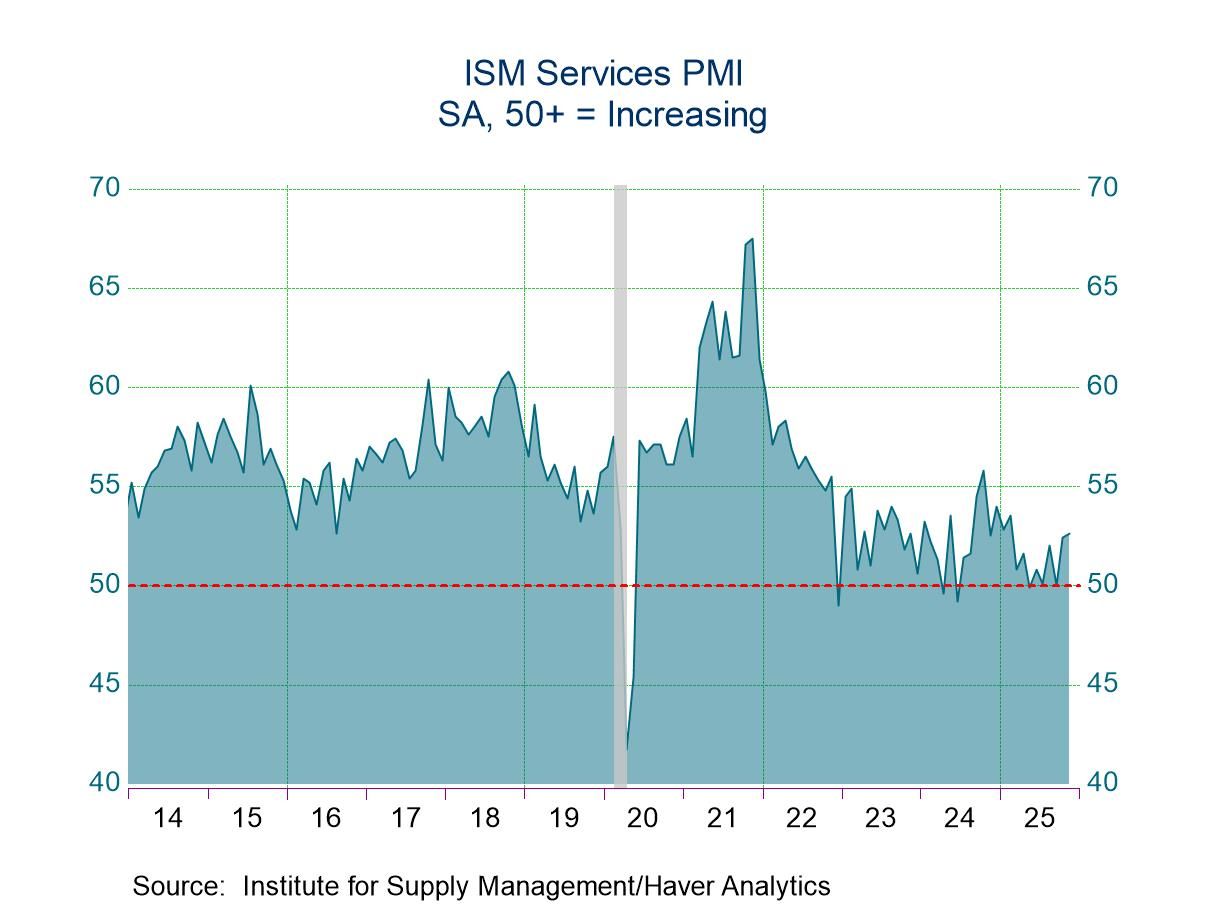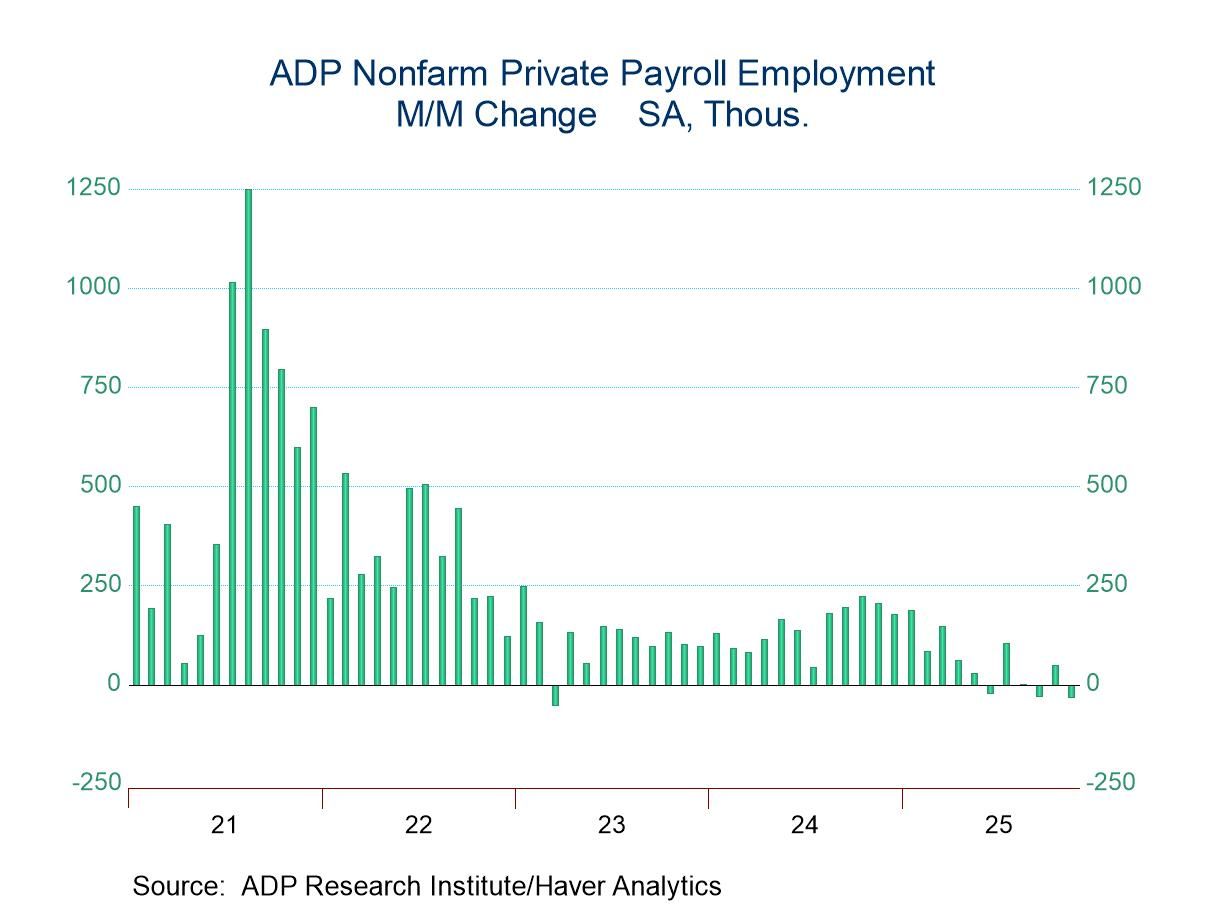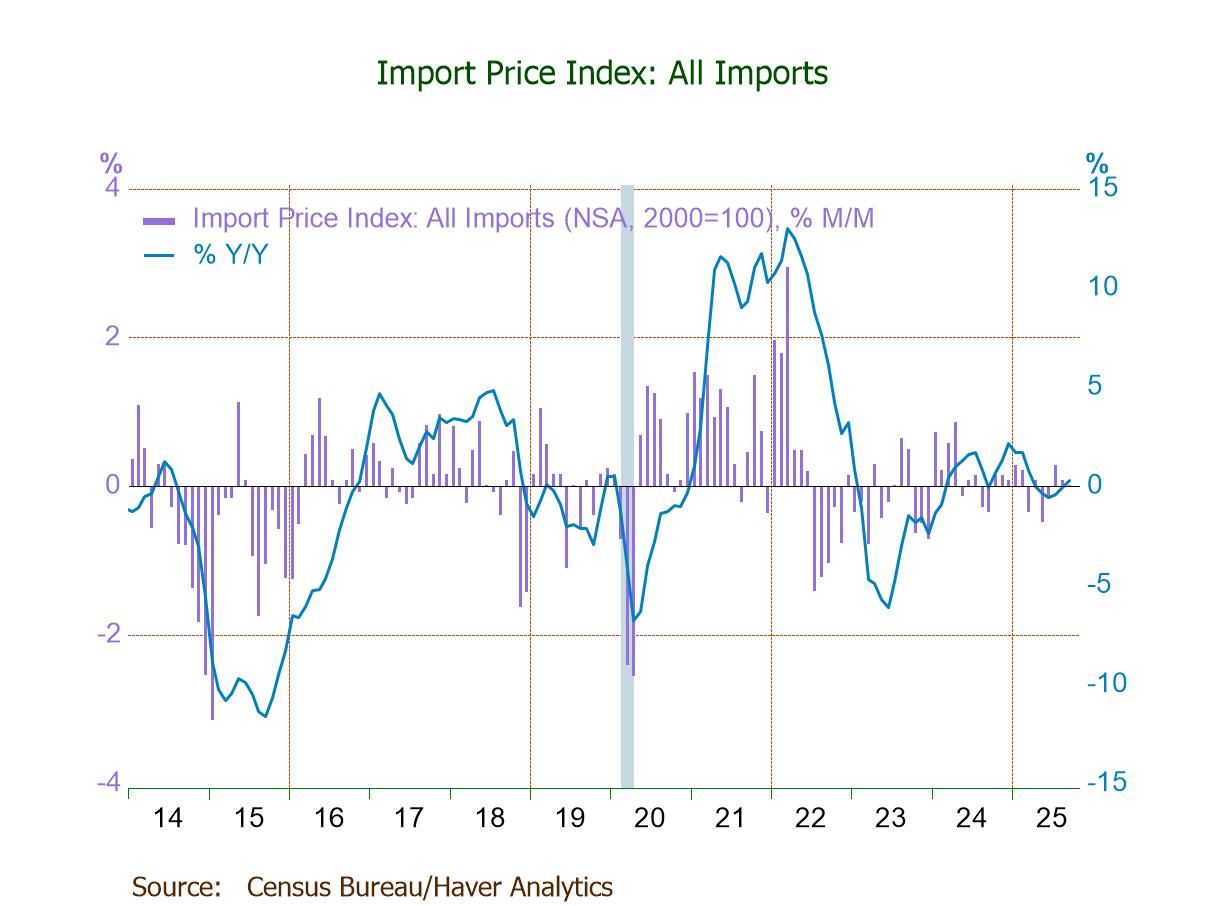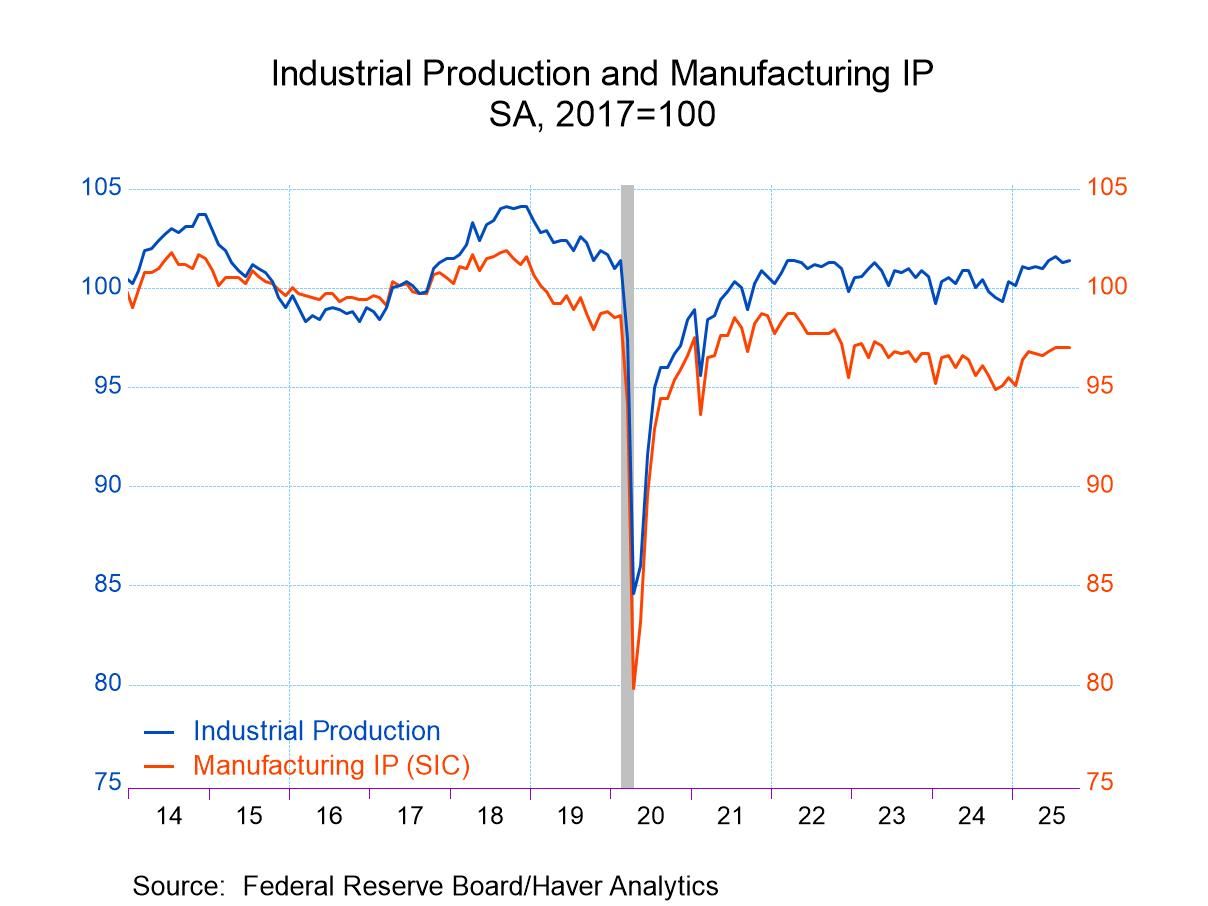 Global| Mar 08 2019
Global| Mar 08 2019U.S. Employment Brakes Suddenly as Wages Accelerate; Jobless Rate Declines
by:Tom Moeller
|in:Economy in Brief
Summary
The job market during February was filled with contrary indications, some pertaining to the unwinding effects of the government shutdown in January, and some due to adverse weather conditions. Nonfarm payrolls increased 20,000 last [...]
The job market during February was filled with contrary indications, some pertaining to the unwinding effects of the government shutdown in January, and some due to adverse weather conditions.
Nonfarm payrolls increased 20,000 last month (1.7% y/y) following a 311,000 gain, revised from 304,000. December's increase was revised up slightly to 227,000 from 222,000. February's increase fell short of expectations for a 188,000 improvement in the Action Economics Forecast Survey. Average hourly earnings rose 0.4% and exceeded expectations for a 0.3% rise. The y/y increase strengthened to 3.4%, the strongest gain since April 2009.
The February unemployment rate declined to 3.8%, the lowest level in four months. A 3.9% rate had been expected. The overall jobless rate, including those who were marginally attached or working part-time for economic reasons, fell to 7.3%, a new low for the economic expansion.
From the payroll employment, the modest m/m increase in jobs overall brought the three month average gain to a still firm 186,000. Factory sector employment improved 4,000 (1.9% y/y) after strengthening by 20,000 or more in each of the prior four months. Construction sector employment declined 31,000 (+3.2% y/y) after surging 53,000. Three-month average growth declined to 13,000, down from the 46,000 high as of February last year. Mining & logging employment declined 5,000 (+6.9% y/y) after a 7,000 rise.
Private service sector employment increased 57,000 (1.8% y/y) after surging 227,000 in January. The gain was held back by a decline in retail trade employment, and little or no growth in several other categories including leisure & hospitality (2.6% y/y), information (-0.1% y/y), trade, transportation & utilities (1.0% y/y) and financial activities (1.2% y/y). Educational employment services jobs fell 18,700 (+1.2% y/y). Countering this weakness was a 22,500 increase (2.3% y/y) in health care & social assistance jobs and an improved 42,000 rise (2.6% y/y) in professional & business services employment. Within the latter gain was a 5,800 rise (2.2% y/y) in temp hiring.
Public sector hiring declined 5,000 (+0.3% y/y) and reversed two months of 3,000 increase. Local government hiring fell 4,000 (+0.3% y/y) and the number of state government jobs eased 1,000 (+0.3% y/y). Federal government hiring held steady (0.3% y/y).
The 0.4% increase in average hourly earnings reflected a 0.6% rebound (3.1% y/y) in construction sector earnings following a 0.5% drop. Factory sector earnings also showed strength with a 0.4% gain (2.0% y/y) as they rebounded from a 0.3% decline. Private service sector pay improved 0.4%. The 3.7% y/y gain was a record and nearly double the rate of increase during all of 2014. Information sector pay increased 6.5% y/y while earnings in retail trade surged 5.0% y/y. Earnings in the leisure & hospitality sector also strengthened 4.1% y/y. Earnings of education & health care workers rose a lesser but improved 2.9% y/y.
The length of the average workweek eased to 34.4 hours but has been trending sideways since late in 2015. Mining & logging sector hours slipped to 46.1 while factory hours slipped to 40.7, the fewest since early in 2017. Construction hours also collapsed to 38.9. Private service hours held steady at 33.3 as the financial activity workweek lengthened to a record 37.8 hours. The professional and business service sector workweek has been steady at 36.2 hours since 2014, while the education & health services remained at 33.0 hours, equaling the most in over ten years. Leisure & hospitality hours eased to 26.0 hours.
From the household sector survey, the slip in the unemployment rate to 3.8% reflected a 255,000 increase in employment and a 45,000 decline in the labor force. The labor force participation held steady m/m at 63.2%, up from the 62.7% low during all of 2015. The labor force participation rate for women aged 25-54 years actually improved to 76.0%, while for men in that age bracket the rate jumped m/m to 89.3%.
The unemployment rate for workers with less than a high school diploma declined to 5.3%. For high school graduates with no college, it held steady at 3.8% and for high school graduates but some college, it fell to 3.2%. Workers with a college degree were 2.2% unemployed.
By age group, teenage employment declined 3.1% y/y while employment for workers aged 25-54 rose a lessened 0.8% y/y. Employment for workers aged 55 and over increased 3.7% y/y.
The labor market data are contained in Haver's USECON database. Detailed figures are in the EMPL and LABOR databases. The expectations figures are in the AS1REPNA database.
| Employment: (SA, M/M Change, 000s) | Feb | Jan | Dec | Feb Y/Y | 2018 | 2017 | 2016 |
|---|---|---|---|---|---|---|---|
| Payroll Employment | 20 | 311 | 227 | 1.7% | 1.7% | 1.6% | 1.8% |
| Previous Estimate | -- | 304 | 222 | -- | -- | -- | |
| Manufacturing | 4 | 21 | 20 | 1.9 | 2.0 | 0.7 | 0.1 |
| Construction | -31 | 53 | 16 | 3.2 | 4.6 | 3.6 | 4.1 |
| Private Service-Producing | 57 | 227 | 184 | 1.8 | 1.7 | 1.8 | 2.2 |
| Government | -5 | 3 | 3 | 0.3 | 0.5 | 0.6 | 0.9 |
| Average Weekly Hours - Private Sector | 34.4 | 34.5 | 34.5 | 34.5 | 34.5 | 34.4 | 34.4 |
| Private Sector Average Hourly Earnings (%) | 0.4 | 0.1 | 0.4 | 3.4 | 3.0 | 2.6 | 2.6 |
| Unemployment Rate (%) | 3.8 | 4.0 | 3.9 | 4.1 | 3.9 | 4.4 | 4.9 |
Tom Moeller
AuthorMore in Author Profile »Prior to joining Haver Analytics in 2000, Mr. Moeller worked as the Economist at Chancellor Capital Management from 1985 to 1999. There, he developed comprehensive economic forecasts and interpreted economic data for equity and fixed income portfolio managers. Also at Chancellor, Mr. Moeller worked as an equity analyst and was responsible for researching and rating companies in the economically sensitive automobile and housing industries for investment in Chancellor’s equity portfolio. Prior to joining Chancellor, Mr. Moeller was an Economist at Citibank from 1979 to 1984. He also analyzed pricing behavior in the metals industry for the Council on Wage and Price Stability in Washington, D.C. In 1999, Mr. Moeller received the award for most accurate forecast from the Forecasters' Club of New York. From 1990 to 1992 he was President of the New York Association for Business Economists. Mr. Moeller earned an M.B.A. in Finance from Fordham University, where he graduated in 1987. He holds a Bachelor of Arts in Economics from George Washington University.


